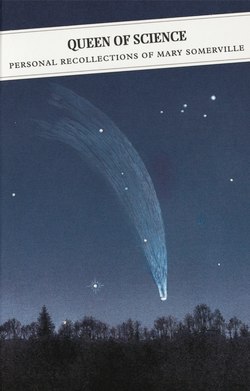Читать книгу Queen Of Science - Somerville Mary - Страница 5
Editorial Practice
ОглавлениеElizabeth Patterson points out that the published Personal Recollections include errors of date etc. Some of these are, I think, interesting in themselves, as an old woman looks back over what has constituted her life and times and some, indeed, turn out not to be errors after all (see note 44). In some cases, Mary Somerville cannot herself remember exactly when things happened but what she does know, in a way that the accurate dates cannot in themselves provide for us, is how it felt to those living at the time when extraordinary things happened. There are a number of places in the Recollections where Mary Somerville tells her readers that she cannot remember exactly when things occurred. This is, of course, a favourite trope of writers of autobiography to get them off the hook of falsification, which they know is always lurking for the memoirist, but it seems to me legitimate in that it retains the sense of immediate excitement by refusing to go to the books of statistics to verify memory. Elsewhere, as in the question of the earthquake at Assisi (see p. 98), I have tried to indicate how errors in dating may have occurred. Altogether, I hope the text gives the impression of a life assimilated, rather than set out according to the rule book.
I have conflated my notes and those from the original edition. When the notes are not mine, this is clearly signalled. Instead of dealing with the many people that Mary Somerville encountered in her long life in notes, I have chosen to offer brief biographies. These are signalled in the text by a degree sign. In preparing the biographies, I have been indebted to all the usual reference sources (national dictionaries of biography, subject dictionaries of biography, and the major encyclopaedias), but also particularly to Elizabeth Patterson’s Mary Somerville and the Cultivation of Science. These debts are signalled by ‘EP’ with a page number where appropriate. I have followed Elizabeth Patterson’s practice in giving the dates of assumption as Fellows of the Royal Society, thus showing how even the apparently non-scientific, like Woronzow Greig indeed, had amateur commitments to science.
Reading these brief biographies gives a conspectus of the life of Europe over more than a century. These are many of the people who made the modern world and a number of them were acquaintances or friends or at least in some way crossed the path of this remarkable woman.
The brief biographies do not cover everyone named in the Recollections. Some who are little more than names are not noted, although, if they are very interesting in themselves, I have tried to give some indication of what made them significant in their day. A number of private individuals are not included, since it is what Mary Somerville remembers of them that is significant; their achievement, in other words, is to have been remembered by her. Others, like Scott, are too famous to require to be noted. Some of the very famous, like Byron, are mentioned simply to indicate at which points their lives crossed with Mary Somerville’s. Occasionally, as with Joanna Baillie, I have indulged myself with slightly longer entries, which either signal their importance for Mary Somerville or, following her own gentle but persistent feminism, privilege women who have been obscure until relatively recently.
The text is that of the first edition (London: John Murray, 1873), with interpolated passages from the first and second drafts of the autobiography in the Somerville Collection of papers in the Bodleian Library, Oxford.
The original printed text has been edited so that it is generally brought into line with modern spelling and punctuation, as in the use of italics for titles, rather than the quotation marks of the original. The exception is the letters, which are left with the idiosyncrasies that distinguish them as letters, although I have removed obvious errors such as ‘Finders’ for ‘Flinders’ on p. 94.
I have edited the passages from the drafts, silently removing spelling mistakes, of which there are fewer than might be imagined from Mary Somerville’s insistence that she was a bad speller, adding light punctuation for intelligibility, and expanding ampersands; where I have added words to complete the sense, I indicate this by square brackets. Since Mary Somerville was obviously quite happy to accept the corrections of her compositors (p 97), I do not think any useful purpose is served by trying to reproduce the manuscripts exactly, especially since I use only selected passages from them. My aim throughout has been to produce a readable text while still allowing readers to see something of the original process of editing out ‘unacceptable’ passages.
I have brought the spelling of foreign names in both the printed text and the drafts into line with generally accepted spellings so that readers may go directly to the name in the list of brief biographies without being distracted by an uncommon or erroneous spelling.
The Bodleian shelf marks of the drafts are as follows: First draft: Somerville Collection, Dep. c.355, box 5, MSAU-2 (signalled in the text by 1D and page number/s). Second draft: Somerville Collection, Dep. c.355, box 5, MSAU-3 (signalled in the text by 2D and page number/s).
DM
